
The view

This sign told of how hunting groups a thousand years ago used to frighten the bison herds into stampeding off a cliff. The injured animals could then be easily butchered on the spot, right next to camp. Pottery fragments, arrowheads, stone blades, and even the charcoal of old fires have been found next to numerous bison bones at the bottom of these gullies.

More hunters... vutlures gather on a nearby rock.

A small gang or rafter (gotta love these group names for things!) of turkeys huddled together under whatever protection they could find to get out of the rain which had started to fall. Fortunately we had umbrellas.
The Yellow Mounds Overlook overlooked... well, yellow mounds. 65 million years ago, a shallow sea drained away and a jungle sprang up. The tree roots broke up the shale (or fossil mud) below, and chemicals from decaying plants produced a yellow soil. About 37 million years ago, it was covered up by sediment from the west. A jungle sprang up again, this time converting the new sediment into a red soil. It too was eventually buried and both layers (the yellow and red soils) were fossilized.




As the rain continued to fall, the parking lots became emptier and emptier.
We stopped briefly at the Conata Basin Overlook, but eventually the rain became too much even with umbrellas.

Braving the elements
The different color layers contain evidence of life here between 37 and 23 million years ago. From a warm wet climate filled with Saber-toothed cats, through a cooling time with small deer, to a dry treeless landscape with burrowing beavers... the fossil record is ample.


A changing landscape and the things that live in it
It rained heavily on the way to the campsite but had stopped by the time we arrived... conveniently!
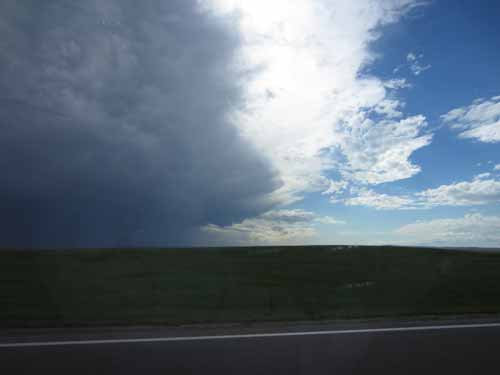
Racing out of the storm

Setting up the evening's accommodations
A visit to the ranger station was highly informative... filled with maps, illustrations, fossils, plant and animal displays and even mud balls.
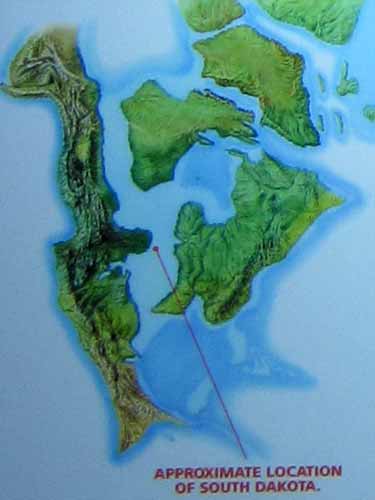
There are zero dinosaur bones here. That's because at the time the thunder lizards roamed the earth, this area was under water.

There were, however, lots of really large marine lizards called mosasaurs.

The fossils lie in the Chadron Formation (wedged between the older Pierre Shale and the newer Brule Formation).
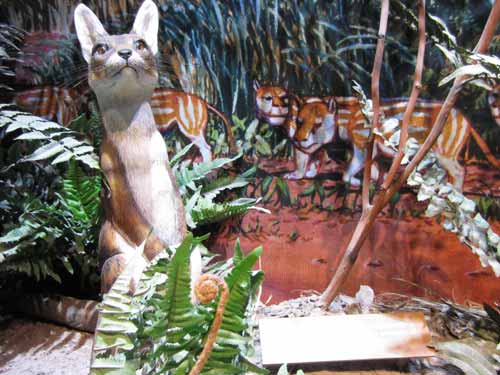
Critters that use to be...

... and critters that are now. The prairie dog is a keystone animal. Hawks, coyotes and ferrets rely on it for food; owls, rabbits and insects live in its network of burrows. If the prairie dog goes, the entire ecosystem goes.

In the year 1500, these grasslands were home to more than 50 million bison, wolves and even the prairie grizzly bear.
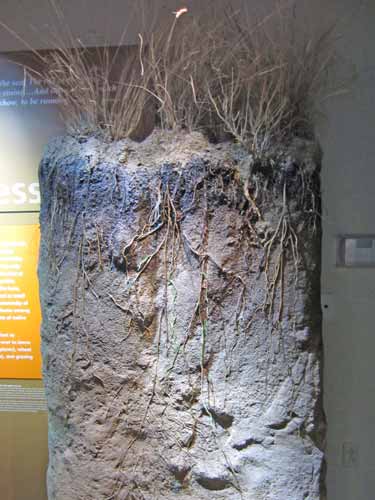
Even the roots of simple grasses must run very, very deep in order to survive the dry times.

To show how quickly the soft rocks of the Badlands are eroding, this US geological survey marker was flush with the surface in 1959. 45 years later, it had been undermined by nearly one foot. In contrast, the granite comprising Mt. Rushmore only erodes 1/10 inch per 1,000 years.

Armored mud balls are formed when rainwater runs through a wash. The rushing water pushes mud along with it, which clumps into a larger and large ball as it rolls along. The water dries up, and so does the ball.

When the Europeans moved in, many of the native Americans were moved out. Some of the children were sent to boarding schools back east. These photos of some Sicangu Lakota boys (taken around 1888) show how they looked before...
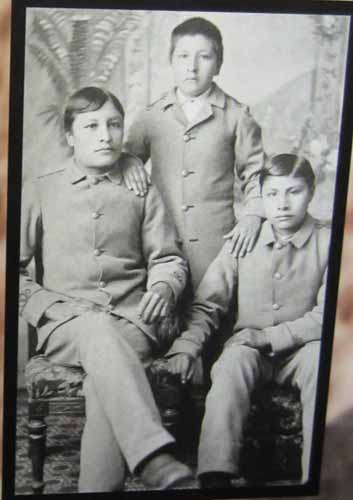
... and after they were sent to the Carlisle Indian Industrial School in Pennsylvania. It was a spiritual death for many.
With the weather all cleared up again, we walked the Cliff Shelf Nature Trail. This was a beautifully built walkway that wrapped up along the cliff side, rising 300 feet to give a view over the White River Valley.
Water is scarce in the Badlands, which gets less than 16 inches of precipitation per year. This bowl-like area provides more moisture than normal, acting as sort of an oasis. Thousands of years ago, a massive block of stone broke loose from the cliff above and fell with such force that it compacted the underlying layers to less porous materials, hence slowing water drainage. This type of event is known by geologists as a "slump."

The lovely boardwalk...

... heading up...

... view from the top...

... and looking back down.

Looking over the White River Valley

Vultures circled in large numbers overhead.

The lushness of the slump

Juniper berries

Cactus flower

A mule deer with a mouthful of delicious grass

Life WILL find a way.

After the storm

Evening light filters in.


